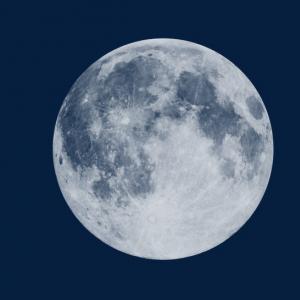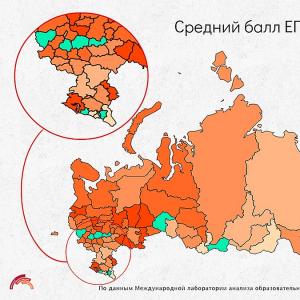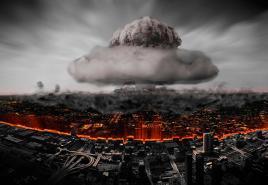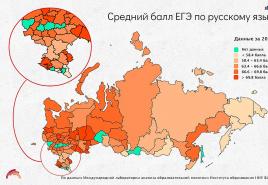Living conditions on the mainland Eurasia. Geographical characteristics of Eurasia
In the discussion of the article "The Trample of Dilettantism" I was repeatedly pointed out that the climate in the Russian Plain and in Siberia changed - both during the periods of glaciers and during the interglacials.
In view of numerous requests to clarify this issue, I publish this text.
_____________________________________________________________
Ice sheets appeared in Antarctica about 20 million years ago. In the high latitudes of the Northern Hemisphere, the first glaciers arose 4-5 million years ago. Over time, the climate worsened, but even about 1 million years ago, temperatures exceeded modern ones. But later the temperatures dropped so much that glaciation covered most of the Northern Hemisphere.
Mountain glaciers descended far into the valleys, and ice sheets advanced from the north. But another warming came, and forest zones moved far to the north. As soon as it got colder, the forests disappeared and tundra landscapes and cold periglacial steppes arose in high and middle latitudes.
During the period of glaciation, due to the fact that a significant amount of water from the World Ocean turned into ice, its level dropped significantly. Sometimes it fell to 150-200 m, and a significant part of the continental shelf was exposed.
During the last strongest glaciation, about 18 thousand years ago, the air temperature on Earth was 5 ° colder than today, and in Western and Eastern Europe - even by 9-15 ° (a significant part of its territory was covered with a thick layer of ice).
During the maximum period of the last glaciation, almost one third of the modern land area was covered by a glacier. The largest ice sheets at that time were: Antarctic - 14 million km2, Laurentian (Canadian) - 13.2 million km2, Scandinavian - 10-12 million km2, Ural-Siberian - 4.5 million km2. Because of this, the level of the World Ocean dropped significantly in comparison with the modern one (by 130 m), about 27 million km2 of the continental shelf were exposed and the so-called land bridges connecting the continents arose. Bridges connected continental Europe with Greenland, Asia with North America, and the isthmus between North and South America was significant.

(Blue indicates a glacier, dark green - areas of land exposed due to a drop in the level of the World Ocean, green arrows - supposed migration routes of Homo sapiens)
The warming process began about 15 thousand years ago. The ice sheet began to collapse and retreat. Following him moved vegetation, which gradually mastered more and more new lands.
The study of the composition of plant communities, soils, and existing landscapes buried in sediments of different origins on the territory of Europe made it possible to identify the following types of climate: subarctic, boreal, Atlantic, subboreal, subatlantic, which were established 11 thousand years ago and existed until the modern era.
The warmest period of time, called the "climatic optimum", lasted about 4 thousand years and ended about 5 thousand years ago.
In Northern and Central Europe, the average annual temperatures have become 3-4 ° higher than modern ones, and in North America and Siberia - even by 5 °. Marine area polar ice in the Arctic Ocean has greatly decreased.
Greenland was completely ice-free, but taiga vegetation also grew on its territory. Most of Iceland was covered with birch forests. Forest vegetation was located not only on the northern coast of Norway, but also on the Siberian coast of the Arctic Ocean.
The fact that the average water temperature in the Arctic was then several degrees higher than at present is evidenced by the expansion of the habitat of some animals. The common edible mussel, for example, lived off the shores of Svalbard, Franz Josef Land and Novaya Zemlya (now it is found up to the shores of the southern part of Greenland, in Iceland and near the Kola Peninsula, but only in the area of \u200b\u200bthe Gulf Stream).
Warming traces are well preserved even in Antarctica. In particular, these are traces of water erosion, indicating that at times ice in Antarctica was glacial and water flows washed away the thawed soil. In the coastal waters of Antarctica, the southern tip of Africa and Australia and Tierra del Fuego lived more thermophilic mollusks than those that live today.
Warming has contributed to the movement of many plants to northern Europe. Deciduous forests appeared in the north of Germany and Poland, thermophilic plants such as stone oak and ivy appeared in Denmark, and linden appeared in England. In the mountains, the border of the snow line has greatly increased, the forests have risen into the mountains almost 400-500 m above the current level.
(Broadleaf forest)
However, humidity during the climatic optimum changed very unevenly. It increased in the north of the Russian (East European) Plain, and, on the contrary, decreased south of the 50s.
The general warming caused a shift towards the poles of the climatic zones, which altered the atmospheric circulation. The landscapes of steppes, semi-deserts and deserts were located north of the modern ones, and now arid regions received a large amount of precipitation. If you look closely at the surfaces of modern deserts, you can clearly see dry channels along which rivers used to flow, and saucer-shaped lowlands occupied in the past by lakes. Seeds, fruits and even whole trunks of moisture-loving plants that once grew in these places are buried in the thickness of the sands. AT Central AsiaIn the Near and Middle East, humidity during the climatic optimum was much higher than at present.
A warm and humid climate only 10 thousand years ago existed in all now arid regions of Asia and Africa. For example, in the Thar desert during the climatic optimum, the total amount of atmospheric precipitation was 4 times higher than the current level. There were savannahs, gazelles, antelopes, elephants and cattle-breeding tribes lived here. The inhabitants of the ancient settlement of Harappa, whose ruins are located in the now arid region on the banks of the Indus, even built special devices for drainage of storm water about 5 thousand years ago.
About 10-12 thousand years ago, almost in the center of one of the arid regions of the Earth - the Sahara, there were two huge freshwater lakes with dense thickets of tropical vegetation along the shores, not inferior in size to the modern Caspian Sea. The current Lake Chad is a small relic of this vast sea. Elephants, zebras, hippos, rhinos grazed in the savannah, which was gradually replaced by tropical rainforests. In the mountainous areas adjacent to the Sahara, ash, maple, and linden grew.
Rock carvings on the Tassilin-Ajer plateau and the results of excavations indicate that settlements were located on the shores of the lake, whose inhabitants were engaged in hunting, fishing, and cultivated fields. Remnants of stone tools, fishhooks and household items were found there.
However, the favorable period of climatic optimum quickly ended. Drought began to occur more and more often, and finally, under the onslaught of the sands, the vegetation disappeared, the rivers and lakes dried up.
The climate had a direct impact on the economic structure of people. With the beginning of the climatic optimum (the border between the Paleolithic and the Mesolithic coincides with it), one of the most favorable stages in the life of human society began. This time was characterized not only by a high culture of making stone tools, but also by the transition to a sedentary lifestyle.
The favorable climate has contributed to the widespread distribution of forests and wild animals. People searched for, mined and consumed for food what was readily available, what nature provided. But nothing was created in return. This could not go on for long. Over time, the number of animals, especially large ones, began to decline. It was easier for people to jointly kill a large animal than to hunt down a dozen small ones for a long time. In addition, the hunters destroyed the strongest and most viable animals, and the sick and the old fell to the predators. Thus, primitive people undermined the basis of animal reproduction.
Thus, the emergence of agriculture and animal husbandry was associated not only with changes in natural conditions, but also with unreasonable management.
Unsuccessful hunts, long journeys in search of animals, the number of which was greatly reduced, prompted the ancient people to switch to the domestication of animals. This guaranteed them life regardless of the vagaries of the weather and good luck in the hunt. The most ancient regions of domestication were the territories of the modern Sahara Desert, between the Tigris and Euphrates, Indus and Ganges. Agriculture emerged almost simultaneously with cattle breeding.
The earliest farmers were carriers of the so-called Badari culture. It got its name from the Badari area in Sudan, where ancient stone hoes, sickles and agricultural products were discovered.
(Artifacts from El-Badari, Egypt. 4-5 millennium BC)
The Badarian culture arose about 5 thousand years ago. Agricultural cultures similar in age developed in Mesopotamia and in other regions. Egypt is considered a classic country of ancient agriculture.
Abundance of moisture, warm climate, fertile soil - this is the key to the development of agriculture and the creation of a high culture of agricultural production of the Egyptians and Sumerians.
At first, pastoralist tribes roamed in search of suitable pastures. The number of livestock increased and it became more difficult to find open areas. Pastoralists, like farmers, began to burn forests and use the vacated land for pastures and arable land.
Land development in areas prone to climatic changes led to the disruption of the established balance for centuries. The moisture turnover and temperature regime of the earth's surface were violated. Mass grazing of livestock contributed to the rapid degradation of the soil cover. The destroyed forests, savannas and pastures were not restored. With the onset of aridity due to the developing cold snap, semi-desert and desert landscapes appeared in the place of the once luxurious forests and savannas. At first, people somehow tried to prevent the onset of the sands, but then they were forced to look for and develop new lands.
From the preserved erosion marks in the river valleys, it has been established that the high flow of the Nile, Tigris, Euphrates, Indus, Ganges and other rivers in the past has changed quite strongly. After the climatic optimum, the level of the World Ocean dropped by almost 3 m.
Drought and the onset of sands contributed to the decline of the Neolithic culture in the Sahara and the Harappa culture in the Indus Valley. In conditions of aridity, people were forced to develop irrigated agriculture. Preserved complex irrigation structures created by the hands of ancient people. We are amazed at the perfection of the forms and scale of construction work. The development of irrigated agriculture did not save, but only postponed the complete depletion of the soil. Many ancient settlements ceased to exist under the pressure of the advancing sands.
This was probably the first environmental crisis. In the future, unreasonable management and human intervention in many natural processes more than once led to very undesirable results, some ended in disasters.
In Europe, Mediterranean vegetation could no longer overcome the Alps. But anyway almost 100 km north the boundaries of the distribution of thermophilic vegetation have shifted. Cereals are being cultivated again in Iceland. The grapes grew all over the southern coast of the Baltic Sea and even in England. According to contemporaries, English grape wines of that time were not inferior in quality to the famous French wines.
The maximum warming in Iceland occurred in the XI-XII centuries. It was warm everywhere: in America and in Asia. Ancient Chinese chronicles report that in the VII-X centuries. tangerines grew in the Yellow River Valley, which means that the climate of this territory was subtropical, and not moderately warm, as at present. According to a number of historical information and cultural monuments of Japan, starting from the IX century. very early cherry blossoms are noted. This event has always been recorded, since during the cherry blossom season, the Emperor of Japan usually held large festivities. There is evidence that in the VI-VIII centuries. in China, the number of severe winters was minimal. They began in the XIII-XIV centuries. During the period of a low climatic optimum, a humid climate prevailed in Kampuchea, India, the countries of the Near and Middle East, Egypt, Mauritania and countries located in the south of the Sahara Desert.
The development of human society, various events in the life of peoples and states, interstate relations are well documented in Europe. Many peoples inhabited this continent in the early Middle Ages, but as an example, we will focus on the life of the Vikings, since their sagas tell a lot about the natural conditions of the late 1st and early 2nd millennia. Natives of Scandinavia, Vikings, in Russia they were called Varangians, made long transitions , seized foreign countries and mastered new lands. The extensive expansion of the Vikings had socio-political and economic roots. And at the same time, the warming of the climate contributed to the conquests and transitions of the Vikings.
The accounts of the life and campaigns of the Vikings are recorded in ancient Scandinavian legends, or sagas, which were passed orally from generation to generation and only later were recorded by Irish monks. We will learn about the political system of that time, family relations and economic condition Vikings.
At the beginning of the IX century. Vikings captured the Faroe Islands. They got their name from the numerous flocks of sheep grazing on the green slopes. Translated from Norwegian Faroe means Sheep Islands. Vikings discovered Greenland. This island owes its name to the fact that at that time it appeared to the Vikings in the form of an endless green carpet. On 25 ships, 700 people with belongings and cattle sailed across the North Atlantic and founded several large settlements in Greenland. The settlers in Greenland were engaged in cattle breeding and probably cultivated grain. The total number of residents has reached 3,000. For that time, this figure was significant.

(Greenland today)
It is hard to imagine that Greenland, this silent and thick island of ice, could have been in bloom just a thousand years ago. However, in reality it was so. The Vikings did not stay in Greenland for long. Under the onslaught of the advancing ice and the developing cold snap, they were forced to leave this huge island. The ice well preserved the houses, outbuildings and utensils of the Vikings, as well as traces of livestock and even the remains of grain.
The Vikings not only made shuttle flights between Greenland and the European continent, they swam across the North Atlantic, periodically visited the North American continent and even had settlements in Canada and on the islands of the Canadian Arctic Archipelago. This is narrated not only in the sagas, but also confirmed by the finds of ancient settlements.
None of the Icelandic or Old Norse saga mentions ice in the North Atlantic, which, as is well known, now greatly impedes navigation. Nothing is said about harsh winters either.
On small wooden ships, which possessed excellent seaworthiness, the Vikings sailed not only westward and sailed to the coast of Canada and Ellesmere Island, but also sailed far north. They discovered Spitsbergen, repeatedly entered the White Sea and reached the mouth of the Northern Dvina. The Norwegians even swam to Novaya Zemlya, where they hunted sea animals. All this gives reason to believe that at the beginning of the 2nd millennium in the Arctic, during the low climatic optimum, most likely, long-term thick ice was absent. In Svalbard, the remains of a fossil tundra soil, only 1,100 years old, have recently been discovered. Consequently, in the X-XI centuries. and even earlier on Spitsbergen not only was there no ice sheet, but also tundra and forest-tundra landscapes were located.
(Based on materials: Yasamanov N.A. "Entertaining climatology" - M .: "Knowledge", 1989)
_______________________________
LET'S SUMMER THE RESULTS.
When climatologists talk about anthropogenesis, "warming" means a small and gradual increase in temperature compared to the PRIOR period.
To what values? Let's count.
The current values \u200b\u200bof average annual temperatures are as follows: Vorkuta (-5.3), Irkutsk (-0.9), Arkhangelsk (+1.3), Nizhny Novgorod (+4.8), Moscow (+ 5.8), Sochi (+ fourteen ).
Roughly speaking, during the last glaciation (16-8 thousand years BC) in Sochi it was approximately the same as in Moscow, in Moscow - as it is now in Vorkuta, and in Vorkuta there was a glacier.
And the climatic optimum, which took place in the 7-3 millennium BC, brought warming by almost 20 degrees!
But compared to today, the rise in average annual temperatures was still moderate: 4-5 degrees. That is, in Vorkuta it has become like in Arkhangelsk, in Irkutsk - like in Nizhny Novgorod, in Moscow - like in Chisinau, and Sochi - like in Palermo. There is a difference, yes. Slightly warmer than winter, a little longer warm season, more food, less resources for heating.
But neither palm trees in the tundra zone, nor sunflowers at the North Pole grew in the climatic maximum. At the most, there are coniferous forests on the coast of the Arctic Ocean. Under the canopy of which (as mentioned in the previous article) all the same gray forest soils are formed.
So, no radical differences from today's natural conditions were observed even during the period of short-term (by geological standards) warming. But by the time of the disintegration of the Indo-European community, it also ended. The resettlement of Indo-European and Indo-Iranian (actually, "Aryan") peoples took place already during the period of the next cold snap. And it leaves much less room for imagination ...
Russia is located on the most interesting and diverse continent of the planet, which has collected almost a little bit of everything.
So what place in the world does the continent of Eurasia take?
Characteristics of the largest continent on Earth
There are 6 continents on the planet. Eurasia (in English it is spoken Eurasia) is the largest.

Specifications:
- Area - 55,000,000 km².
- There was no researcher who discovered Eurasia as a whole. Different peoples discovered it piece by piece, and in different periods great ancient civilizations were formed. The term "Eurasia" was introduced in 1880 by Eduard Suess.
- The mainland is so large that on the map it can be seen in 3 hemispheres at once: northern, eastern and western.
- The population density is about 94 people per sq. km.
- Eurasia is the continent with the largest population. For 2015, the number is 5 billion 132 million.
Extreme points on the continent Eurasia with coordinates

List of countries of Eurasia with capitals
The countries on the mainland are usually divided into countries in Europe and Asia.
European countries with capitals:

Asian countries with capitals:

What oceans wash Eurasia
The main feature of the geographical location of Eurasia is that the mainland is washed by almost all oceans. And since in some countries the 5th Ocean (Southern) is not yet recognized, it can be partly argued that Eurasia is washed by all existing oceans.

Which parts of the mainland are washed by the oceans:
- Northern Arctic - northern;
- Indian - southern;
- Pacific Ocean - eastern;
- Atlantic - west.
Natural zones of Eurasia
The territory has all existing types of natural areas. They stretch from west to east and north to south.

How are they located geographically:
- arctic - islands in the very north;
- and forest tundra - in the north, beyond the Arctic Circle. The zone is expanding in the eastern part;
- taiga - located slightly to the south;
- mixed forests - located in the Baltic States and in the eastern part of Russia;
- broadleaf forests - zones in the western and eastern parts of the mainland;
- hard-leaved forests - located in the Mediterranean region;
- forest-steppe and steppe - located in the central part to the south of the taiga;
- deserts and semi-deserts - are located south of the previous zone, as well as in the eastern part of the territory of China;
- savannah - the coast of the Indian Ocean;
- variable wet forests - the most southeastern and southwestern regions, as well as the Pacific coast;
- rainforests - islands located in the Indian Ocean.
Climate
Due to the geographic location of the mainland, climatic conditions on its territory are quite diverse. All climatic indicators differ in different regions: temperature, precipitation, air masses.

The southernmost regions are the hottest. To the north, the climate is gradually changing. The central part is already characterized by moderate climatic conditions. AND northern part of the mainland is in the kingdom of ice and cold.
The proximity to the oceans also plays an important role. The winds of the Indian Ocean bring a lot of rainfall. But the closer to the center, the less of them.
What climatic zones is Eurasia in:
- arctic and subarctic;
- tropical and subtropical;
- equatorial and subequatorial.
Relief
On other continents, a certain type of relief is common. Usually mountains are located on the coast. The relief of Eurasia differs in that mountainous regions are located in the center of the continent.

There are two mountain belts: the Pacific and the Himalayan. These mountains are of different ages and were formed at different times.
There are several plains to the north of them:
- Great Chinese;
- West Siberian;
- European;
- Turan.
Also in the central part are the Kazakh Uplands and the Central Siberian Plateau.
Highest mountains
One of the main features of Eurasia is that on the mainland there is the highest mountain in the world - Everest (8848 m).

Mount Everest
But there are several more highest mountain peaks:
- Chogori (8611 m);
- Ulugmuztag (7723 m);
- Tirichmir (7690 m);
- communism peak (7495 m);
- peak Pobeda (7439 m);
- Elbrus (5648).
Volcanoes
The highest active volcano in Eurasia is Klyuchevaya Sopka. It is located near the east coast of the mainland in Kamchatka.

Volcano Klyuchevaya Sopka
Other active volcanoes:
- Kerinchi (Sumatra Island, Indonesia);
- Fujiyama (Honshu Island, Japan);
- Vesuvius (Italy);
- Etna (Sicily, Italy).

Erciyas volcano
The highest extinct volcano is Erciyas (Turkey).
Largest island
Kalimantan is the largest island in Eurasia.

Parts of the island belong to the 3rd different countries: Indonesia, Malaysia and Brunei. It is the 3rd largest island in the world.
Peninsula of Eurasia

Largest river
The largest river in Eurasia, the Yangtze, flows in China.

Its length is approximately 6,300 km, and the basin area is 1,808,500 km².
Largest lake
Lake Baikal is the largest in Eurasia and in the world.

Its area is 31,722 km². The lake is located in the eastern part of Siberia. It is truly unique because it is not only the largest, but also the deepest in the world. The maximum depth of Lake Baikal is 1,642 m.
- The capital of Iceland, Reykjavik, is the northernmost in the world.
- One plant is interesting - bamboo. He is able to grow up to 90 cm per day.
- "Altai" translated from the Mongolian language means "Golden Mountains".
The size of the territory and geographic location. Eurasia is the largest continent of the Earth. It is almost 7 times larger than Australia, 2 times larger than Africa, and larger than Antarctica, North and South America combined. Eurasia is 1/3 of the land mass of the planet - about 53.4 million km 2. The continent is located in the Northern Hemisphere and stretches from north to south for 8 thousand km across all belts - from the Arctic to the equatorial. Its length along the parallel is 16 thousand km. This is more than a hemisphere (almost 200 °): the mainland occupies the entire Eastern Hemisphere, and its extreme western and eastern points are in the Western.
The huge size of Eurasia determines the diversity and uniqueness of its nature. No other mainland has so many natural complexes, changing from north to south and with distance from the coast.
Outline of the coast. The mainland massif is so large that it separates all the oceans of the Earth. Its shores are washed by the waters of all four oceans of the planet. Coastline Atlantic ocean, washing the western coast, is heavily indented by peninsulas and bays. There are many islands and seas near the mainland (Fig. 1, 2). The seas, which go deep into the land, separate parts of the world (Europe and Asia) and continents (Eurasia and Africa).
A wide shelf is adjacent to the northern edge of Eurasia Arctic ocean. Its coastline is smoother. It is dissected into peninsulas by narrow bays-lips and the White Sea . By the marginal seas Norwegian,Barents (Fig. 3), Kara, Laptev, East Siberian from the mainland separated large islands and archipelagos.

Figure: 3. Barents Sea
Coastline Quiet the ocean is weakly dissected. The marginal seas (Fig. 4) are cut into the eastern coast of the mainland in wide contours. They are separated from the ocean by arcs and chains of volcanic islands and peninsulas. Southern coast of Eurasia, washed by Indian ocean, stretches along a broken line: large peninsulas protrude into the ocean - Arabian (the largest on the planet), Hindustan and Malacca... There are only two seas near the southern edge of the mainland - Krasnoe and Arabian (Fig. 5).

The configuration of the coastline determines the possibilities and degree of participation of oceanic air in the formation of the continental climate.
The nature of Eurasia is influenced by the surrounding continents. Eurasia has two close neighbors. In the southwest - Africa, separated by the Suez Canal, and in the east - North America, separated by the Bering Strait. "Bridge" with a length of more than 3 thousand km - the greatest island region of the planet - Large and Small Sunda islands (Malay Archipelago), Filipinothe island - connects Eurasia with Australia. The farthest, separated from Eurasia by oceans, are South America and Antarctica.
The composition of the territory. Mainland Eurasia includes two parts of the world - Europe and Asia. The border between them is arbitrary. It is carried out along the eastern slope of the Ural Mountains, downstream of the Ural River to the Caspian Sea, along the northern foot of the Caucasus, the Black Sea, the Bosphorus Strait, the Sea of \u200b\u200bMarmara, and the Dardanelles Strait. The division of Eurasia into two parts of the world has developed historically - as a result of the settlement and development of its territory (by different peoples from different sides). But it also has a natural scientific basis. The continent was formed as a result of the union of lithospheric blocks that had previously developed in different conditions. After unification for millions of years, it develops as one natural-territorial complex. therefore continent Eurasia is a unique geographic system: large, complex, but at the same time integral.
On a contour map, draw the border between the parts of the world that are part of Eurasia.
Regions of Europe and Asia. The territory of Eurasia is very vast. On this vast territory, not only nature, but also the population, as well as its economic activities, have significant differences. In order to better study this diversity, to understand its causes and patterns, regionalization is carried out: as part of a large continent, less extensive territories are distinguished - regions... One region unites countries that have common features of geographic location, as well as similarities in historical and modern socio-economic development. As part of the European part of the mainland, there are North, South, Eastand Western Europe ... The countries of Eastern Europe that occupy a neighboring position in relation to our Motherland - Belarus - are united into an independent region, the Belarusian borderland. This region also includes Russia - the largest state on the mainland, located in both Eurasian parts of the world. The Asian part of the mainland is subdivided into Central, East, South-East, South and Southwest Asia. Borders between regions are drawn along the state borders of their countries(fig. 6).

Figure: 6. Regions of Eurasia
Bibliography
1. Geography grade 9 / Tutorial for grade 9 institutions of general secondary education with Russian as the language of instruction / Edited by N. V. Naumenko /Minsk "Narodnaya Asveta" 2011
And also along the straits connecting Chernoe and. The name "Europe" comes from the legend that the Phoenician king Agenor had a daughter, Europe. Almighty Zeus fell in love with her, turned into a bull and kidnapped her. He took her to Crete. There, Europe first set foot on the land of the part of the world that has since been named after her. Asia - the designation of one of the provinces to the east of, as the Scythian tribes were called to the Caspian Sea (Asia, Asians).
The coastline is very indented and forms a large number of peninsulas and bays. The largest are and. The mainland is washed by the waters of the Atlantic, Arctic and. The seas formed by them are deepest in the east and south of the mainland. Scientists and sailors from many countries took part in the study of the mainland. The research of P.P.Semenov-Tyan-Shanskiy and N.M. ...

Eurasia is the most populated continent. More than 3/4 of all inhabitants of the world live here. The eastern and southern regions mainland. By the variety of nationalities living on the mainland, Eurasia differs from other continents. Slavic peoples live in the north: Russians, Czechs, and others. South Asia is inhabited by numerous Indian peoples and Chinese.
Eurasia is the cradle of the most ancient civilizations.
Geographical position: Northern Hemisphere between 0 ° E and 180 ° east etc., some of the islands lie in the Southern Hemisphere.
Eurasia Square: about 53.4 million km2
Extreme points of Eurasia:
- the extreme northern point of the island is Cape Fligeli, 81 ° 51` s. w .;
- the extreme northern mainland point is Cape Chelyuskin, 77 ° 43` n. w .;
- the easternmost island point is Ratmanov Island, 169 ° 0` W. etc .;
- the extreme eastern mainland point is Cape Dezhnev, 169 ° 40` W. etc .;
- extreme southern island point - South Island, 12 ° 4` S. w .;
- the extreme southern mainland point is Cape Piai, 1 ° 16` n. w .;
- extreme western island point - Monchique rock, 31 ° 16` W. etc .;
- the westernmost mainland point is Cape Roka, 9 ° 30`W. etc.
Climatic zones of Eurasia.
This article will consider the largest continent - Eurasia. It got its name thanks to the union of two words - Europe and Asia, which personify two parts of the world: Europe and Asia, which are united as part of this continent, and the islands also belong to Eurasia.
The area of \u200b\u200bEurasia is 54.759 million km2, which is 36% of the total land area. The area of \u200b\u200bthe Eurasian islands is 3.45 million km2. The population of Eurasia is also impressive, as it accounts for 70% of the total population on the entire planet. As of 2010, the population of the Eurasian continent was already more than 5 billion people.
Continent Eurasia is the only continent of planet Earth, which is washed by 4 oceans at once. The Pacific Ocean washes the mainland in the east, the Arctic Ocean washes in the north, the Atlantic Ocean washes the mainland in the west and the Indian Ocean in the south.
The dimensions of Eurasia are quite impressive. The length of Eurasia when viewed from west to east is 18,000 kilometers and 8,000 kilometers when viewed from north to south.

Eurasia has all climatic zones, natural zones and climatic zones that exist on the planet.
Extreme points of Eurasia, which are located on the mainland:
There are four extreme continental points that Eurasia has:
1) In the north of the mainland, Cape Chelyuskin (77 ° 43 ′ N) is considered the extreme point, which is located on the territory of the country of Russia.
2) In the south of the mainland, Cape Piai (1 ° 16 ′ N) is considered the extreme point, which is located in the country of Malaysia.
3) In the west of the mainland, the extreme point is Cape Roca (9º31 ′ W), which is located in the country of Portugal.
4) And finally, in the east of Eurasia, the extreme point is Cape Dezhnev (169 ° 42 ′ W), which also belongs to the country of Russia.

Eurasia mainland structure
The structure of the Eurasia continent differs from all other continents. First of all, the fact that the continent consists of several plates and platforms, as well as the fact that the continent in its formation is considered the youngest of all the others.
The northern part of Eurasia consists of the Siberian platform, the East European platform, and the West Siberian plate. In the east, Eurasia consists of two platforms: it includes the South China Platform and also includes the Sino-Korean Platform. In the west, the mainland includes plates of Paleozoic platforms and Hercynian folding. The southern part of the mainland consists of the Arabian and Indian platforms, the Iranian plate and part of the Alpine and Mesozoic folding. The central part of Eurasia consists of the Aleozoic folding and the plate of the Paleozoic platform.
Eurasian platforms located on the territory of Russia

The mainland Eurasia has many large cracks and faults, which are located on Lake Baikal, Siberia, Tibet and other regions.
Relief of Eurasia
Due to its size, Eurasia as a continent has the most diverse relief on the planet. The mainland itself is considered the highest continent on the planet. Above the highest point of the continent of Eurasia is only the continent of Antarctica, but it is higher only due to the thickness of the ice covering the earth. The land itself of Antarctica does not exceed Eurasia in height. It is in Eurasia that the largest plains in terms of their area and the highest and most extensive mountain systems are located. Also on the territory of Eurasia there are the Himalayas, which are the highest mountains on planet Earth. Accordingly, the highest mountain in the world is located on the territory of Eurasia - this is Chomolungma (Everest - height 8,848 m).

Today the relief of Eurasia is determined by intense tectonic movements. Many regions on the territory of the Eurasian continent are characterized by high seismic activity. There are also active volcanoes in Eurasia, which include volcanoes in Iceland, Kamchatka, the Mediterranean and others.

Climate of Eurasia
The mainland Eurasia is the only continent where all climatic zones and climatic zones are present. In the north of the mainland there is the arctic and subarctic belts. The climate here is very cold and harsh. A wide strip of the temperate belt begins to the south. Due to the fact that the length of the continent from west to east is very huge, the following zones are distinguished in the temperate zone: a maritime climate in the west, then a temperate continental, continental and monsoon climate.

South of the temperate zone is the subtropical belt, which is also divided from the west into three zones: Mediterranean climate, continental and monsoon climate. The very south of the continent is occupied by the tropical and subequatorial belts. The equatorial belt is located on the islands of Eurasia.
Inland waters on the mainland Eurasia
The continent of Eurasia differs not only in the amount of water space that washes it from all sides, but also in the size of inland water resources. This continent is the richest in terms of groundwater and surface water. It is on the continent of Eurasia that the largest rivers of the planet are located, which flow into all the oceans that wash the continent. These rivers include the Yangtze, Ob, Huanghe, Mekong, Amur. It is on the territory of Eurasia that the largest and deepest reservoirs are located. These include the largest lake in the world - the Caspian Sea, the deepest lake in the world - Baikal. Underground water resources are distributed rather unevenly on the mainland.

On the territory of Eurasia, as of 2018, there are 92 independent states that are fully functioning. The largest country in the world - Russia is also located in Eurasia. By clicking on the link, you can see a complete list of countries with area and population. Accordingly, Eurasia is most rich in the nationality of the people living on it.
Fauna and flora on the mainland Eurasia

Since all natural zones are present on the continent of Eurasia, the diversity of flora and fauna is simply enormous. The mainland is inhabited by a variety of birds, mammals, reptiles, insects and other representatives of the animal world. The most famous representatives of the animal world in Eurasia are the brown bear, fox, wolf, hares, deer, elk, squirrels. The list goes on and on as a wide variety of animals can be found on the mainland. Also birds, fish that have adapted to both low temperatures and arid climates.

Mainland Eurasia video:
Due to the size and location of the mainland, the flora is also very diverse. There are deciduous, coniferous and mixed forests on the mainland. There are tundra, taiga, semi-desert and desert. The most famous representatives of trees are birch, oak, ash, poplar, chestnut, linden and many others. Also a variety of types of grasses and shrubs. The poorest area on the mainland in terms of flora and fauna is the extreme north, where you can only find mosses and lichens. But the more you go to the south, the more diverse and rich flora and fauna on the mainland.
If you liked this material, share it with your friends on social networks. Thanks!







